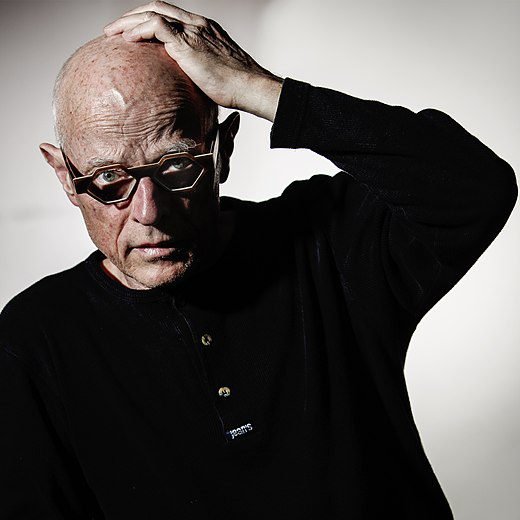ARTWORK DETAILS
REISER by Arnaud Baumann - Baumann's Little Black Book Collection
Interior View
Size currently shown: Plop

Prints still available
Edition of 18. | 7 in XS, 7 in S, 3 in M and one single print in L
250 € Sold out
500 € Sold out
750 € Sold out
Choose Size and Options
Original signed and numbered print
From
250 €
Please note, the price of this work of art is progressive.
This means that every time one of the copies is sold, the price of the remaining prints increases.
Edition of this artwork
Edition of 18. | 7 in XS, 7 in S, 3 in M and one single print in L
Type of print
C-Print
Signature
On the back.
Certificate of Authenticity
Yes, included by the gallery.
Year of Creation
1981 - 1983
Fine Art Artist
Arnaud Baumann
Collection
Baumann's Little Black Book
Jean-Marc Reiser, known as Reiser, who started out as Jean-Marc Roussillon, was a scriptwriter and cartoonist, born in Réhon (Meurthe-et-Moselle) on 13 April 1941 and died in Paris, aged 42, on 5 November 1983 of bone cancer.
He was the husband of Michèle Reiser, television director and member of the CSA, author of the books Dans le creux de la main and Jusqu’au bout du festin.
After starting out as a delivery boy for Nicolas, a wine merchant, Reiser began his career as a cartoonist in 1958, publishing in various minor magazines such as Blagues (pseudonym JIEM) and La Gazette de Nectar (pseudonym J-M Roussillon – an in-house magazine for Nicolas). In 1960, he took part in the creation of Hara-Kiri, founded by Cavanna, Georges Bernier (Professeur Choron) and Fred (Fred Othon Aristidès), the monthly Hara-Kiri that was to become one of the flagships of underground culture in the 1970s. In 1966, he joined the newspaper Pilote, where he worked with a host of talented authors including Gotlib, Alexis, Mézières and Mandryka. In May 68, he drew in Action, with Siné and Wolinski. After Hara-Kiri Hebdo was banned in 1970, due to the disrespectful announcement of General de Gaulle’s death (the famous: Bal tragique à Colombey : un mort), he naturally contributed to its successor, Charlie Hebdo, from the very first issue. Throughout his career, Reiser also published in La Gueule ouverte (he was very interested in ecology, particularly solar energy), BD, Charlie Mensuel, Métal hurlant and L’Écho des savanes.
His work is considerable. His characters include Gros Dégueulasse and Jeanine. His drawings have been collected in numerous collections: Ils sont moches, La Famille Oboulot aux vacances, Les Oreilles rouges, La Vie au grand air, Vive les femmes, La Vie des bêtes etc. The series of Sales Blagues published in L’Écho des Savanes, continued by Vuillemin, continues to attract a large number of readers.
One of the main characteristics of Vuillemin’s style is his habit of talking about ordinary people and their everyday lives. He rarely drew the politicians of his day, even though he worked for a satirical weekly. The simplicity of his drawings. Reiser always goes straight to the point. His aim: to make people laugh.
His humour, very crude for its time, was often in bad taste.
“He went to the cemetery on foot” (he is buried in the Montparnasse cemetery), to quote the title of the special issue of Hara-Kiri on his death, which featured one of his drawings, originally produced for Franco. At his funeral, the Hara-Kiri team laid a wreath reading: “On behalf of Hara Kiri, on sale everywhere”.

Baumann's Little Black Book
In the 1980s, Arnaud Baumann set himself a challenge: to take nude portraits of his friends, which he would publish in the book "Carnet d’adresses" (Little Black Book). The first photo, to convince others, was a leaping self-portrait in his apartment. Nudity in photography was not so common, especially among men. Reiser's photo dates from November 11, 1982, a year before his death [on November 5, 1983]. Reiser had told the photographer a few years earlier, "If one day you make a portrait of me, I would like it to be as a knight." The series ended with a self-portrait in flames, an ultimate act of acknowledgment towards the models laid bare.

Arnaud Baumann
Arnaud Baumann, French portrait photographer and videographer, was born in 1953 and left an indelible mark on the world of photography. His career began alongside photographer Xavier Lambours, with whom he had the opportunity to capture unique and intimate moments by photographing the behind the scenes, hysterics and editorial conferences of Hara Kiri and Charlie Hebdo magazines. This experience marked the start of a promising career.
Over the years, Baumann has been published in renowned magazines such as Hara Kiri, Libération, Le Nouvel Observateur, Télérama, VSD, Paris Match and Géo, thus demonstrating his talent and versatility as a photographer.
During one of the key periods of his career, from 1978 to 1983, Baumann immortalized the evenings at Fabrice Emaer’s “Palace”. Through his photographs, he captures the very essence of these extravagant evenings, immersing us in the electric and liberated atmosphere of a bygone era.
Baumann devotes a large part of his career to portraiture, becoming a master in the art of revealing the essence of well-known personalities and cultural actors. His portraits are imbued with depth and sensitivity, to the point of capturing the soul of his subjects.
Throughout his career, Baumann reinvented his style while remaining faithful to what makes him a generational photographer. His process rethinks the links between the structure of his vision and the reality that surrounds it. His photographs are recognizable by their precise framing, precise colors and always mastered compositions.